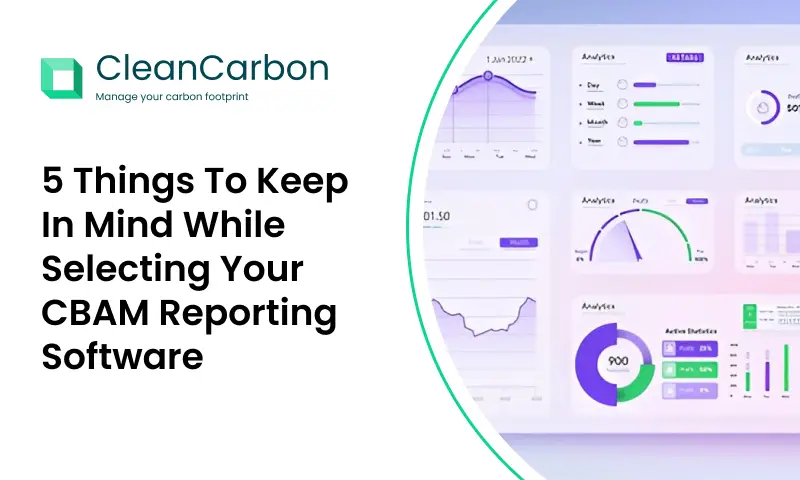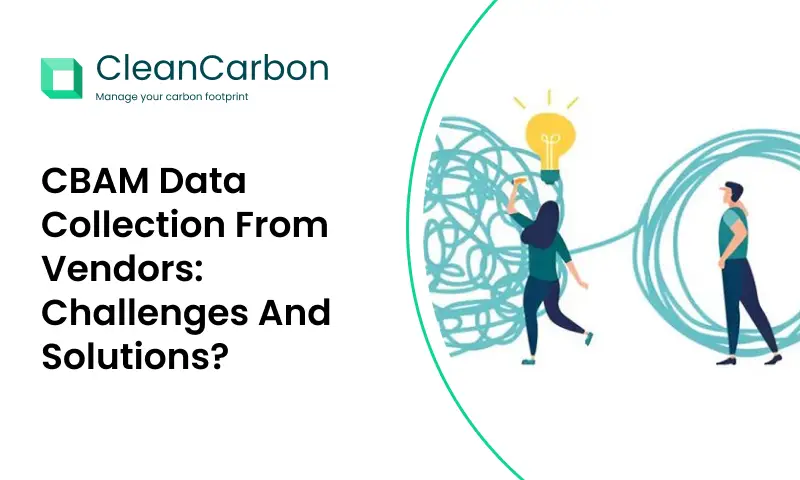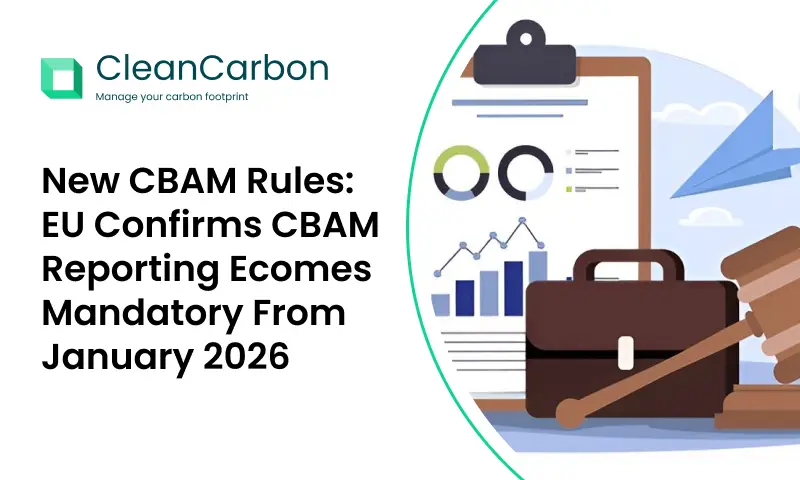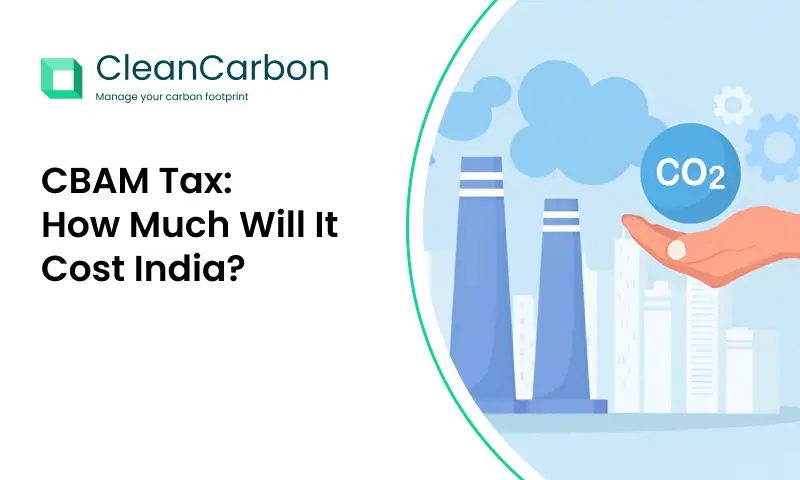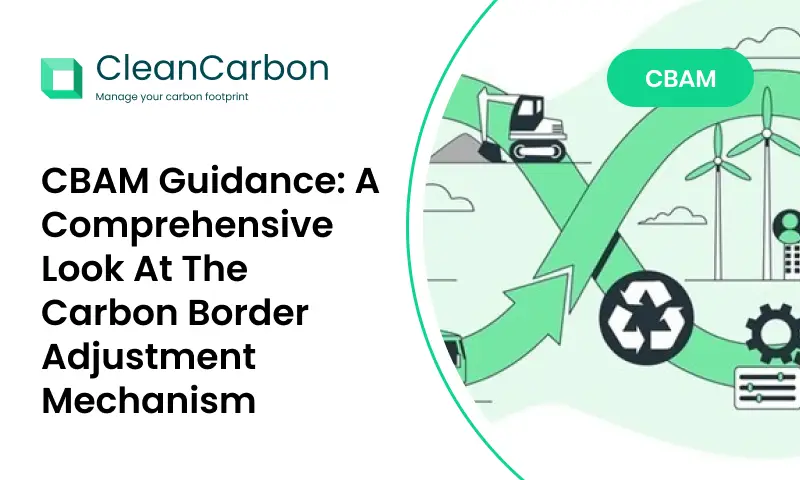The European Union’s Carbon Border Adjustment Mechanism affects international trade by addressing the green cost of being green to the real cost of foreign imported goods. This vision for the future will ensure the carbon cost brings foreign products into the EU market in line with other domestically produced products—smoothing the playing field and ensuring a green cleaner economy.
CBAM: Trailing the Road to Green Trade out of the Battlefield
The system has two strategic purposes: to avoid carbon leakage and to enable international decarbonisation. As the rate of climate change accelerates and nations move toward more ambitious emission-cutting targets, coordinating trade with environment objectives is now not a choice—it’s unavoidable.
The CBAM is a policy instrument introducing a carbon price into imported goods in the EU.However, the purchaser must buy carbon instruments for what would have been collected under the EU Emigrations Trading System, If imported good into the EU has high hothouse gas emigrations but originates from a low ornon-carbon-priced nation.
It’s not a secret tariff or levy. It’s a carbon pricing correction—keeping European industry, which already has to pay for what it pollutes, from being undercut by cheap, dirty imports. CBAM initially targets energy-intensive sectors like cement, steel, iron, aluminium, fertilisers, hydrogen, and electricity.
Why the CBAM Is Relevant Today

1. Preventing Carbon Leakage
Carbon leakage occurs when businesses relocate to less stringent climate policy countries. That drives a wedge around the world’s climate goals and produces no net emissions decreases. The Carbon Border Adjustment Mechanism completes the loop, so carbon-friendly production is incentivized whoever produces it.
2. Increasing the EU's Climate Ambitions
Europe has committed to becoming climate-neutral by 2050. Not only reducing its emissions in Europe, but also indirectly, by offshored product consumption. The Carbon Border Adjustment Mechanism brings EU carbon pricing across borders, which compels foreign suppliers to reconsider their carbon footprint.
3. A Level Playing Field for International Trade
European manufacturers are at a disadvantage in the market if everyone else is not paying the same environmental price. CBAM tries to put that playing field level so clean technology and cleaner production can be unleashed economically.
How the Carbon Border Adjustment Mechanism Works
CBAM is phased two stages:
Phase 1: Transitional Phase (2023–2025)
At this phase, the subject commodity importers are needed to report aggregate emigrations in goods but are n’t yet in fiscal obligation. Controllers and companies are ready at this collection stage with Phase 2 Definitive Period( From 2026 onwards) to be enforced.
Starting 2026, importers will have to buy CBAM instruments of the same CO ₂ as in their significances. The instruments are matched with the EU carbon allowance price for equality of prices.
Where there has been an actual carbon price actually paid later down the export chain of an exporting nation, importer offsets can be skipped not to overcharge.
Who will be most affected by the Carbon Border Adjustment Mechanism?
The countries exporting carbon-producing goods to the EU will take the brunt immediately. Companies in countries where there is no carbon pricing policy will have to swallow the additional cost or spend on clean technology just to stay in business.
Emarking economies, with dirtier operations, will suffer. But so too do they have a silver lining—if they get it right in the first place, they can win market share as green suppliers of preference.
Multinationals that have international supply chains will need to slow down before buying today, disclose more emissions, and prepare for fiscal reassessments.
Preparation for CBAM
Companies must move quickly to offset the impact of the CBAM. How:
- Map Supply Chains
Check whether the imported goods are covered by CBAM and emissions completed. - Gaining Credible Emissions Data
Engage suppliers to monitor direct and indirect carbon emissions. - Implement Monitoring & Reporting Systems
Fully provide monitoring carbon on products and shipments to ensure smooth compliance. - Evaluate Carbon Pricing Exposure
Quantify the probable exposure costs and incorporate carbon expense into budget planning models. - Be Ahead in Carbon Reducing Actions
Invest in cleaner technology, low-carbon materials, and process engineering to minimize exposure. - Compete on a Higher Plane
Utilize cleaner production as a means of differentiation to drive market choice both within and outside the EU.
The Wider Global Implication of the Carbon Border Adjustment Mechanism
The spill-over effect of the Carbon Border Adjustment Mechanism is distant and far away beyond Europe. The EU action with one of the world’s biggest economies is prompting other economies to think about their own carbon pricing mechanism.
Canada and Britain are two of them that are thinking in the same direction. Even carbon price-resistant countries will attempt to reverse the resistance in order to remain competitive with exports.
CBAM has also generated international anger: Is it a climate policy instrument or a trade instrument? Though its critics say that it could disproportionately victimize developing nations, its proponents call it one that promotes longer-term incentives for cleaner industrial manufacturing.
And lastly, if CBAM succeeds, the climate policy of the world would be reversed—carbon pricing is not an exception, but the rule.
Carrot Approach: Offer long-term contracts to suppliers who decarbonize.
Will the Carbon Border Adjustment Mechanism Actually Reduce Emissions?
By applying a front-end, upfront price to embedded carbon imported goods, the Carbon Border Adjustment Mechanism sends a blunt signal: emissions pay, no matter where they’re made.
It calls on producers all over the world to rethink production, shift to clean energy, and compete on sustainability, not prices. By technology, openness, and global cooperation, CBAM can lead emissions cuts at scale worldwide.
Conclusion: A Catalyst for Greener Trade
The Carbon Border Adjustment Mechanism is policy—it’s a paradigm. It places environmental responsibility on the trade agenda, the end of free pollution and the beginning of green responsibility.
For business corporations, CBAM is opportunity and risk. Those who can pivot and embed sustainability within their business model will not just survive but thrive. As the world rushes to meet climate deadlines, strategies like CBAM might just make global progress possible.


